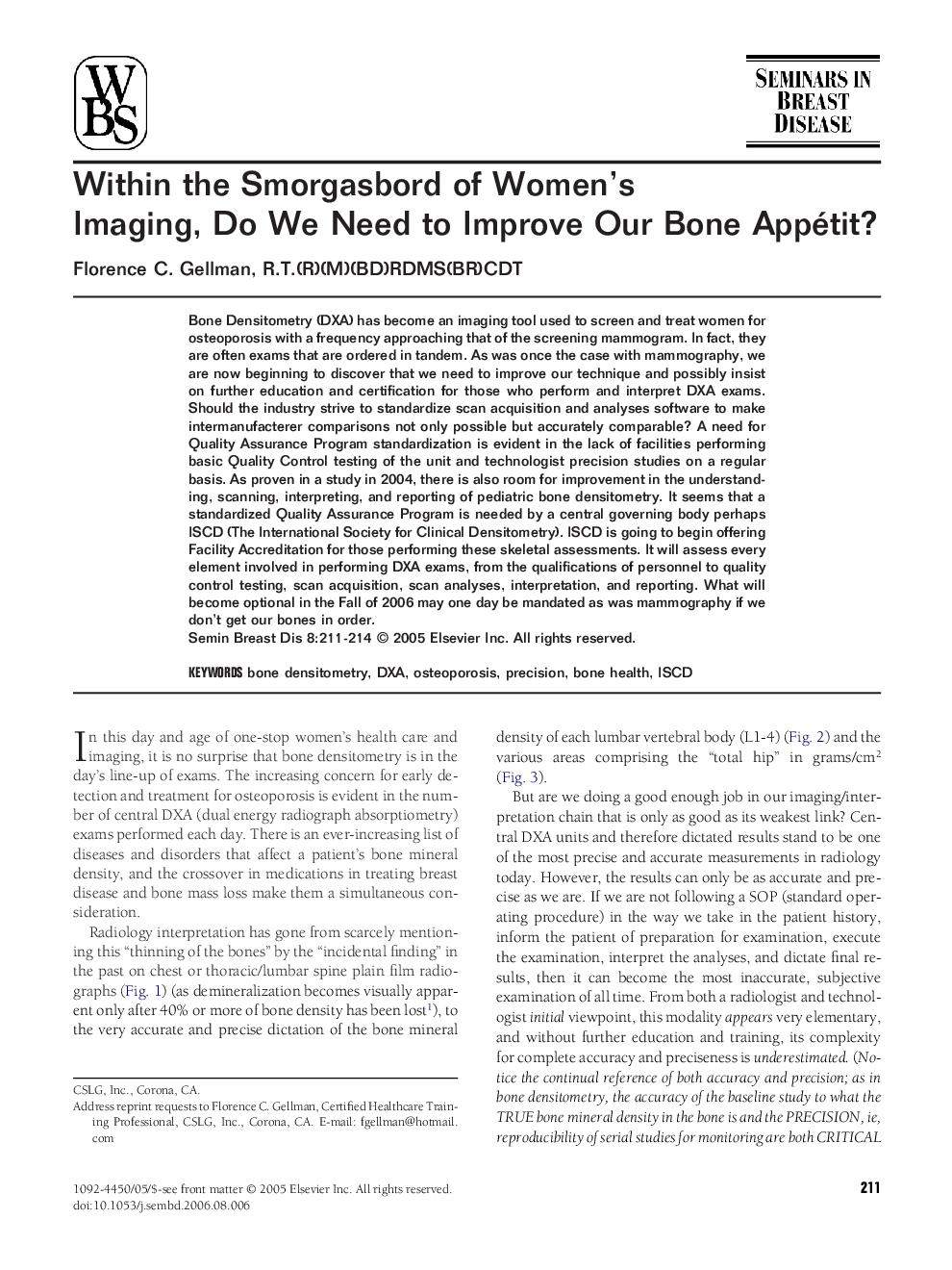| Article ID | Journal | Published Year | Pages | File Type |
|---|---|---|---|---|
| 9340357 | Seminars in Breast Disease | 2005 | 4 Pages |
Abstract
Bone Densitometry (DXA) has become an imaging tool used to screen and treat women for osteoporosis with a frequency approaching that of the screening mammogram. In fact, they are often exams that are ordered in tandem. As was once the case with mammography, we are now beginning to discover that we need to improve our technique and possibly insist on further education and certification for those who perform and interpret DXA exams. Should the industry strive to standardize scan acquisition and analyses software to make intermanufacterer comparisons not only possible but accurately comparable? A need for Quality Assurance Program standardization is evident in the lack of facilities performing basic Quality Control testing of the unit and technologist precision studies on a regular basis. As proven in a study in 2004, there is also room for improvement in the understanding, scanning, interpreting, and reporting of pediatric bone densitometry. It seems that a standardized Quality Assurance Program is needed by a central governing body perhaps ISCD (The International Society for Clinical Densitometry). ISCD is going to begin offering Facility Accreditation for those performing these skeletal assessments. It will assess every element involved in performing DXA exams, from the qualifications of personnel to quality control testing, scan acquisition, scan analyses, interpretation, and reporting. What will become optional in the Fall of 2006 may one day be mandated as was mammography if we don't get our bones in order.
Related Topics
Health Sciences
Medicine and Dentistry
Oncology
Authors
Florence C. R.T.(R)(M)(BD)RDMS(BR)CDT,
